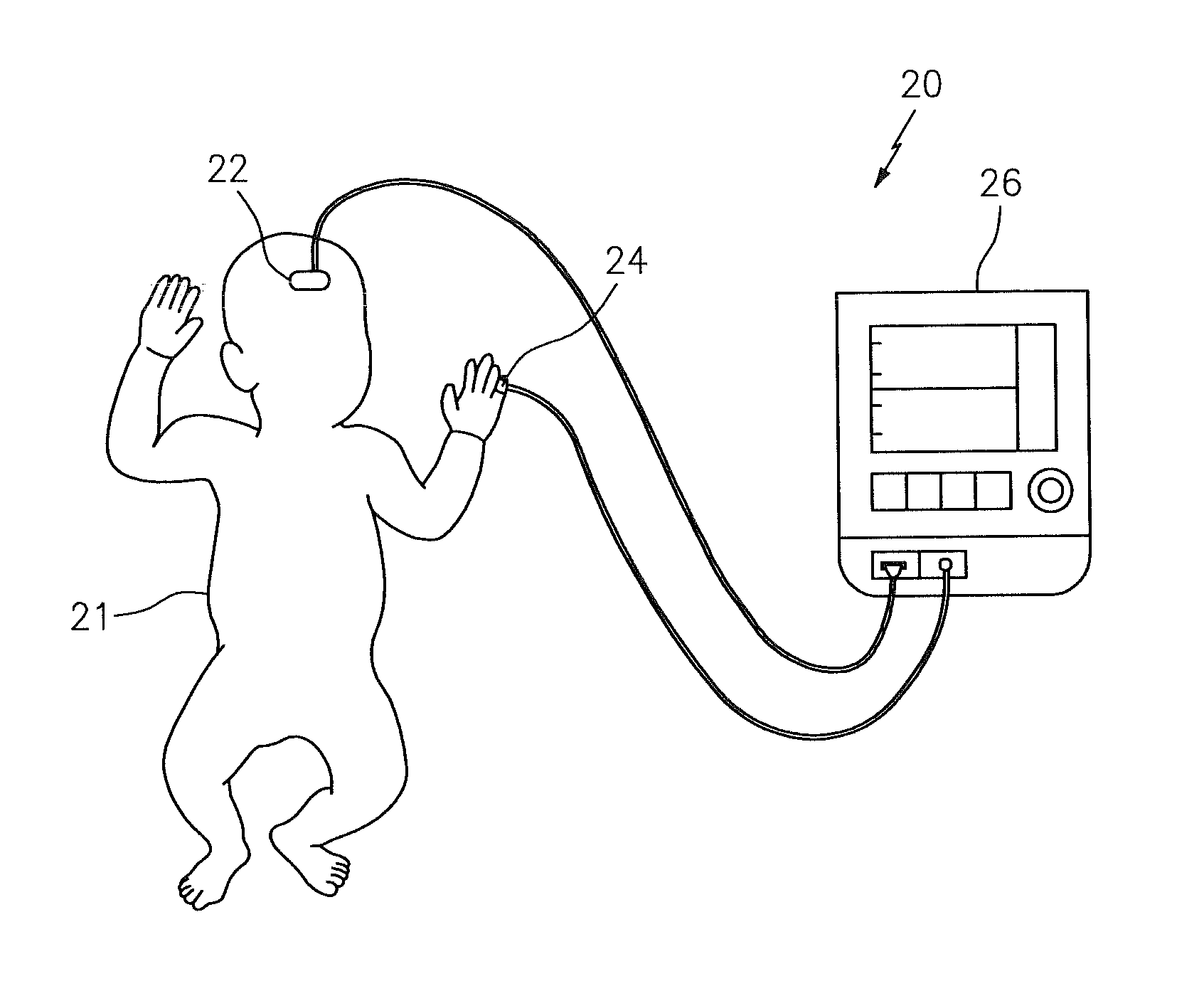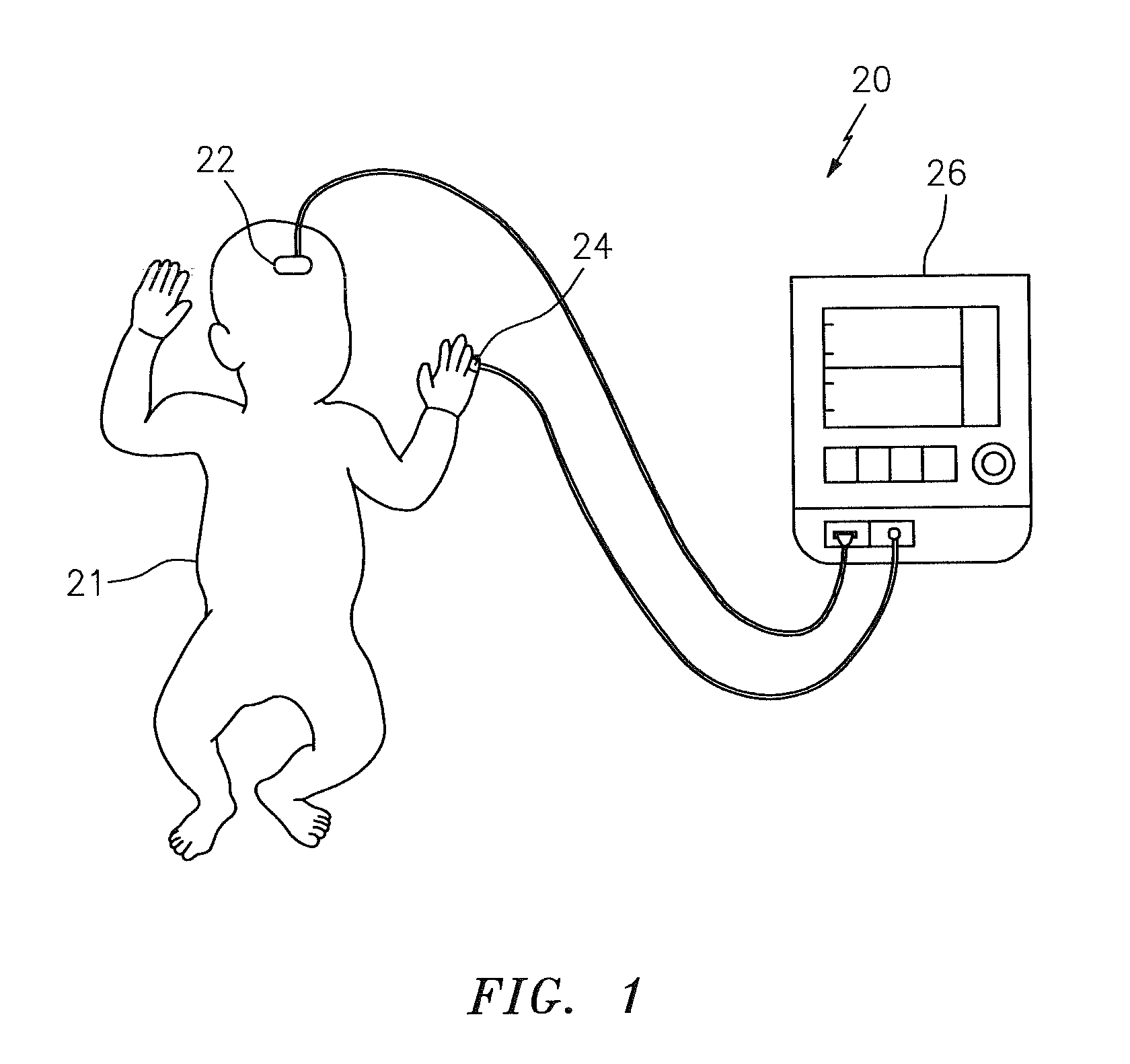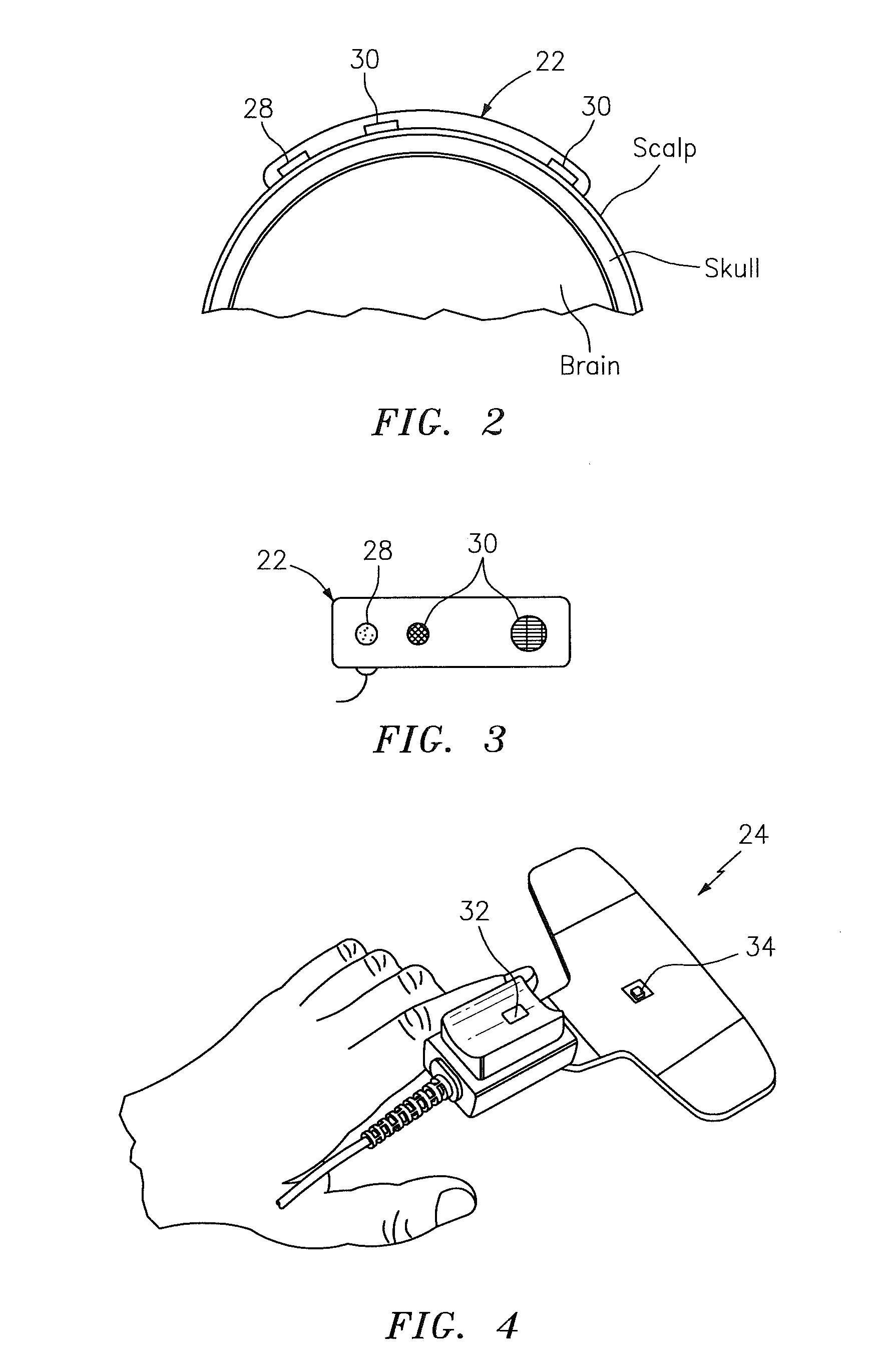Method and apparatus for determining an oxygen desaturation event
a technology of oxygen desaturation and method, applied in the field of methods and apparatuses for noninvasively determining biological tissue oxygenation, can solve the problems of limited understanding of brain injuries that lead to neurodevelopmental delays, increased risk of brain injuries, and neurodevelopmental delays
- Summary
- Abstract
- Description
- Claims
- Application Information
AI Technical Summary
Benefits of technology
Problems solved by technology
Method used
Image
Examples
application examples
CLINICAL APPLICATION EXAMPLES
[0034]An example of a clinical application of the present method and apparatus involves monitoring short term or transient hypoxia and / or ischemia oxygen desaturation events in neonates suffering from Respiratory Distress Syndrome (RDS). RDS is a breathing disorder that affects newborns. RDS rarely occurs in full-term infants, however. The disorder is more common in premature infants born about 6 weeks or more before their full term due date. RDS may occur more often in premature infants due to an insufficient amount of surfactant being produced within the infants' lungs. The surfactant is a liquid that coats the inside of the lungs and helps to keep the infant's lungs open post birth, which in turn facilitates the infant's breathing in air. In the absence of a sufficient amount of surfactant, the infant's lungs can collapse to some degree and make it more difficult for the infant to breathe. In some instances of RDS, the infant may not be able to breath...
PUM
 Login to View More
Login to View More Abstract
Description
Claims
Application Information
 Login to View More
Login to View More - R&D
- Intellectual Property
- Life Sciences
- Materials
- Tech Scout
- Unparalleled Data Quality
- Higher Quality Content
- 60% Fewer Hallucinations
Browse by: Latest US Patents, China's latest patents, Technical Efficacy Thesaurus, Application Domain, Technology Topic, Popular Technical Reports.
© 2025 PatSnap. All rights reserved.Legal|Privacy policy|Modern Slavery Act Transparency Statement|Sitemap|About US| Contact US: help@patsnap.com



